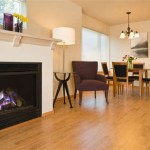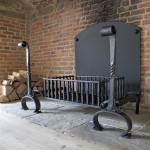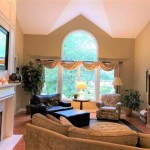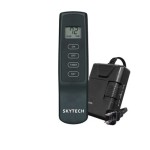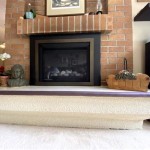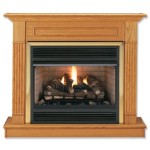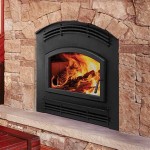Here's an article about gas fireplaces, incorporating your specified requirements:
36 Gas Fireplace Fundamentals: A Comprehensive Guide
Gas fireplaces offer a convenient and aesthetically pleasing alternative to traditional wood-burning fireplaces. They provide warmth, ambiance, and ease of use, making them a popular choice for homeowners. Understanding the intricacies of gas fireplaces, including their types, installation requirements, safety features, and maintenance needs, is crucial for making informed decisions and ensuring a safe and efficient heating experience.
One of the primary benefits of a gas fireplace is its ease of operation. Unlike wood-burning fireplaces, which require manual fueling and constant monitoring, gas fireplaces can be ignited and extinguished with the flip of a switch or the press of a button. This convenience makes them ideal for individuals seeking a hassle-free heating solution.
Furthermore, gas fireplaces are generally more energy-efficient than traditional fireplaces. They produce less heat loss through the chimney and allow for more precise temperature control. Many modern gas fireplaces are equipped with thermostats and remote controls, enabling users to adjust the heat output to their desired level of comfort. This contributes to lower energy bills and a reduced environmental impact.
However, proper installation and maintenance are paramount for safe and efficient operation. This article will delve into the various aspects of gas fireplaces, providing a comprehensive understanding of their functionality and best practices.
Types of Gas Fireplaces
Gas fireplaces are available in various configurations, each designed to meet specific needs and aesthetic preferences. Understanding the different types of gas fireplaces is a crucial step in selecting the most suitable option for a particular home.
Direct Vent Fireplaces: Direct vent fireplaces are sealed units that draw combustion air from outside and vent exhaust gases directly outdoors through a dedicated vent pipe. This design eliminates the need for a traditional chimney and ensures that combustion byproducts do not enter the living space. Direct vent fireplaces are considered the safest and most energy-efficient type of gas fireplace.
Vent-Free Fireplaces: Vent-free fireplaces, also known as ventless fireplaces, do not require a vent or chimney. They use room air for combustion and release exhaust gases directly into the living space. While vent-free fireplaces offer installation flexibility, they are subject to stricter safety regulations due to the potential for carbon monoxide buildup. It is essential to ensure that vent-free fireplaces are equipped with oxygen depletion sensors (ODS) and are used in well-ventilated areas.
B-Vent Fireplaces: B-vent fireplaces, also referred to as natural vent fireplaces, utilize existing chimneys or vent pipes to exhaust combustion gases. They draw room air for combustion and vent exhaust gases through the chimney. B-vent fireplaces are less energy-efficient than direct vent fireplaces due to heat loss through the chimney.
Gas Fireplace Inserts: Gas fireplace inserts are designed to be installed within existing masonry fireplaces. They provide a convenient and efficient way to convert an existing wood-burning fireplace into a gas-fueled heating appliance. Gas fireplace inserts are available in direct vent and B-vent configurations.
Gas Stoves: Gas stoves resemble traditional wood-burning stoves but operate on gas fuel. They are freestanding units that can be installed in various locations throughout the home. Gas stoves offer a unique aesthetic and provide efficient heating.
Installation and Ventilation Requirements
Proper installation and ventilation are crucial for the safe and efficient operation of a gas fireplace. Adhering to local building codes and manufacturer's instructions is essential to prevent potential hazards and ensure optimal performance. A qualified HVAC technician or gas fireplace installer should perform the installation.
Gas Line Connection: A qualified plumber or gas fitter must connect the gas fireplace to a natural gas or propane supply line. The gas line connection must be properly sized and tested for leaks to prevent gas leaks and explosions. A shut-off valve should be installed near the fireplace to allow for quick and easy gas shut-off in case of emergency.
Venting System: The venting system is responsible for removing combustion gases from the fireplace and exhausting them safely outdoors. The type of venting system required depends on the type of gas fireplace. Direct vent fireplaces require specialized vent pipes that are designed to prevent backdrafting and ensure proper exhaust. B-vent fireplaces utilize existing chimneys or vent pipes. Vent-free fireplaces do not require a venting system, but proper ventilation is essential to prevent carbon monoxide buildup.
Clearances and Framing: Gas fireplaces require specific clearances from combustible materials, such as walls, ceilings, and furniture. These clearances are outlined in the manufacturer's instructions and local building codes. Proper framing and insulation are necessary to prevent overheating and fire hazards. Non-combustible materials should be used for the fireplace surround.
Carbon Monoxide Detectors: Carbon monoxide (CO) is a colorless and odorless gas that can be produced by gas fireplaces if they are not properly vented or maintained. Carbon monoxide detectors should be installed in the vicinity of the gas fireplace to alert occupants of dangerous CO levels. Regular testing of CO detectors is essential to ensure their proper function.
Professional Inspection: After installation, a qualified HVAC technician or gas fireplace installer should inspect the gas fireplace to ensure that it is installed correctly and operating safely. The inspection should include a check of the gas line connection, venting system, and clearances from combustible materials.
Safety Features and Maintenance
Gas fireplaces are equipped with various safety features to prevent accidents and ensure safe operation. Regular maintenance is crucial for maintaining the efficiency and safety of the fireplace.
Oxygen Depletion Sensor (ODS): The oxygen depletion sensor (ODS) is a safety device that is required on all vent-free gas fireplaces. The ODS monitors the oxygen level in the room and shuts off the gas supply if the oxygen level drops below a safe threshold. This prevents the buildup of carbon monoxide in the event of improper ventilation.
Flame Failure Device: The flame failure device is a safety mechanism that shuts off the gas supply if the pilot light or main burner flame is extinguished. This prevents the release of unburned gas into the living space, reducing the risk of explosion. Most modern gas fireplaces are equipped with electronic ignition systems that automatically relight the pilot light if it is extinguished.
Tempered Glass: The glass front on a gas fireplace is typically made of tempered glass, which is designed to withstand high temperatures. Tempered glass is less likely to shatter or break than ordinary glass, reducing the risk of injury. However, it is important to handle the glass with care, as it can still crack or break if subjected to impact.
Annual Inspection and Cleaning: A qualified HVAC technician or gas fireplace installer should perform an annual inspection and cleaning of the gas fireplace. The inspection should include a check of the gas line connection, venting system, burner assembly, and safety features. The cleaning should remove any dust, debris, or soot that may have accumulated in the fireplace.
Pilot Light Maintenance: The pilot light is a small flame that ignites the main burner. The pilot light should be inspected regularly to ensure that it is burning properly. If the pilot light is extinguished frequently, it may be necessary to clean the pilot light assembly or adjust the gas pressure. A qualified technician should perform these tasks.
Log Placement: The logs in a gas fireplace are designed to be placed in a specific configuration to ensure proper airflow and combustion. Incorrect log placement can lead to incomplete combustion, which can produce carbon monoxide. Refer to the manufacturer's instructions for proper log placement.
Carbon Monoxide Detector Maintenance: Carbon monoxide detectors should be tested regularly to ensure that they are functioning properly. Replace the batteries in the CO detectors at least once a year, or according to the manufacturer's instructions. If the CO detector alarms, evacuate the premises immediately and call the fire department or a qualified HVAC technician.
Understanding Local Codes: Before installing a gas fireplace, consult local building codes and regulations. Regulations can vary depending on the location and type of gas fireplace. Following local codes ensures a compliant and safe installation.
By understanding the different types of gas fireplaces, installation requirements, safety features, and maintenance needs, homeowners can make informed decisions and ensure a safe and efficient heating experience. Regular maintenance and adherence to safety guidelines are crucial for prolonging the life of the gas fireplace and preventing potential hazards.

Ascent 36 B36ntre 1 Napoleon

Rushmore 36 Inch Truflame Direct Vent Fireplace Fine S Gas

Napoleon Elevation Series 36 Gas Fireplace Direct Vent Millivolt I Fireplaces Usa

Kozy Bayport 36 Gas Fireplace S Hearth Home

Kingsman Zero Clearance Direct Vent Gas Fireplace 36 Wide By 24 North Woods Grills

Slayton 36 Direct Vent Gas Fireplace Contemporary Fireplaces Kozy Heat

Elevation 36 Direct Vent Fireplace Propane Electronic Ignition

Majestic Direct Vent Gas Fireplace Quartz 36 Intellifire Touch Ignition System

Outdoor Lifestyles Courtyard 36 Inch Gas Fireplace

Majestic Quartz36ift Quartz 36 Inch Direct Vent Gas Fireplace

